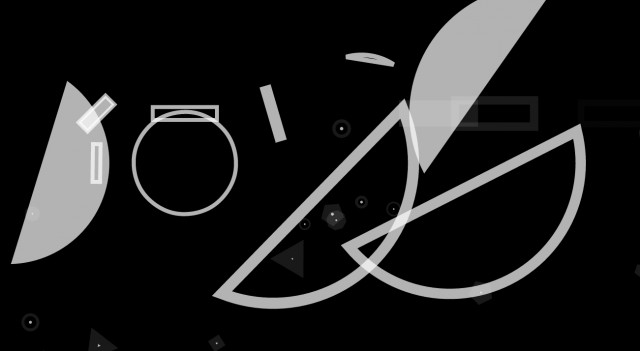Now that your Web browser can do what music creation software can do, presenting a song can be more than just giving people a play button. And allowing people to “remix” your music might mean sounds and software alike.
First, there was Jono Brandel’s terrific Patatap with Lullatone. Press keys on your keyboard, and a warm, Lullatone-inspired sample machine delights with brightly-colored abstract objects and sounds, a sort of custom browser beat box. Patatap went viral, perhaps because it brought musical wonder to the carousel of distracting tabs on the Web.
Now, Jono Brandel (of the Google Creative Lab, with Google the De Medicis of digital art) has teamed up with the UK duo Plaid to make Tether. It infuses Jono’s retro-constructivist geometric visual music poetry with Plaid’s own musical language. But beyond that, it extends the concept. You can let Tether play through, shapes aligned with sounds in a kind of abstract animated music video. But you can also interrupt it with mouse or (on touch devices) fingers, doodling in your own melodic lines, warping rhythms, and adding effects.
What makes it so fun is that it feels unpredictable – simple interactions unfold into ones you may not have expected, particularly as the narrative of the song plays out.
And then you can remix it – in more ways than one. There’s a traditional remix contest, in which you get the stems for Tether to use as you please. But here, there are some twists. The assets themselves are all under an open license, so you are truly free to remix things as you like. And because it was an interactive score, those sounds are unusually compelling as raw building blocks for your own creations.
There are also some great prizes for winners – a big pile of loot and swag which now includes a choice of some of my personal favorite controllers, the slim but rugged, versatile, touchable Keith McMillen QuNeo and QuNexus. Seems Plaid were already fans of these controllers and tour with them. (QuNexus remains my favorite go-to portable keyboard. As seen on KMI’s Facebook page.)

The loot, to entice you to the remix contest – now including a KMI QuNexus or (seen here) QuNeo, excellent slim-line controllers.
The stems:
Remixing can also apply to the Web app itself – because remixing a “song” these days might also mean remixing the software on which it’s based. It’s the usual goodness: CSS, JavaScript, Node.js, WebGL (for the graphics), Ruby … you can also run a local server via Python. The files are well-organized and documented, so it’s pretty easy to get going. And you might be able to hack this without necessarily being an experienced developer – you can try mucking with the assets, or visual styling, before rethinking the code. It’s all under a highly-permissive MIT license.
There’s so much focus on the new and novel. In this case, it’d be great to see some Tether clones and variations; having a crowd from which to choose might even be more interesting than the app itself.
Of course, you can also just play around.
Here’s Tether so you can give it a try:
http://github.com/warprecords/tether
If you want to get in on the remix contest, you’ll need to submit (via any number of methods) by the 11th of May. Grab the stems from SoundCloud, and see details on the official site:

